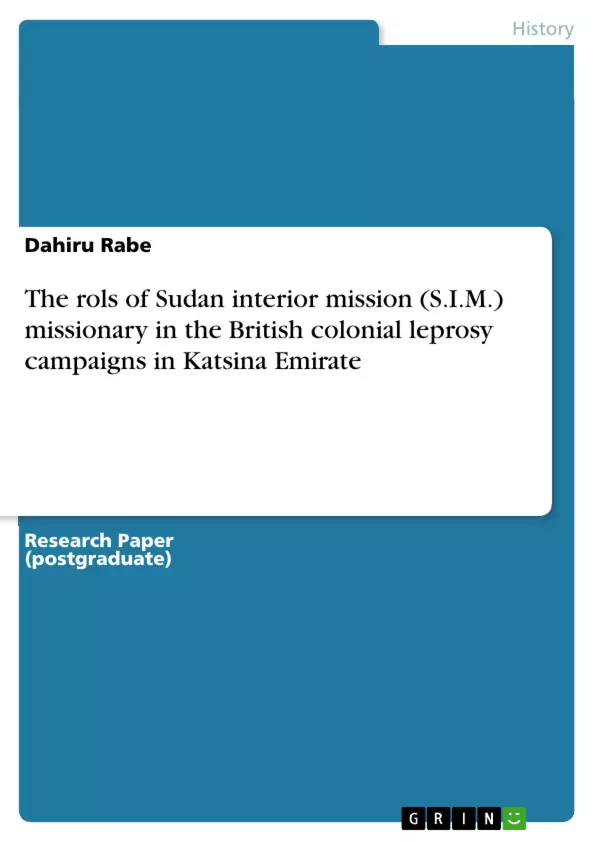ABSTRACT
Throughout colonial period the history of Nigeria had been influenced by European activities and their impact on the area. One important institution that played a very vital role in the colonial activities was the Christian missionary group. Although at the initial stage their importance was not given required attention because of some obvious political reasons, later, their services were recognized and used by the colonial government to address the social challenges prevalent in the society such as leprosy scourge. This paper discusses the attempts made by the Christian missionary in the effort to convert the menace of one of the dangerous diseases in Nigeria during the colonial period. This was achieved by allowing the mission groups to enter some areas that were hitherto restricted. On the other hand, the mission used that opportunity to achieve the main aim of their coming to northern Nigeria. Finally, the paper concludes the discourse by appreciating the genuine efforts of the mission via-a-vis colonial political maneuvers.
Inhaltsverzeichnis (Table of Contents)
- Introduction
- Sudan Interior Mission (S.I.M.)
Zielsetzung und Themenschwerpunkte (Objectives and Key Themes)
This text examines the role of the Sudan Interior Mission (S.I.M.) in the British colonial leprosy campaigns in Katsina Emirate, Northern Nigeria. The work explores the motivations, methods, and impact of the S.I.M.'s involvement in these campaigns, particularly in the context of the broader socio-political landscape of the region during the colonial era.
- The historical context of leprosy in Katsina Emirate and the colonial response.
- The role of missionary organizations, particularly the S.I.M., in addressing leprosy.
- The interplay between colonial authorities, missionary groups, and local communities in implementing leprosy control measures.
- The impact of the S.I.M.'s activities on the social and political dynamics of Katsina Emirate.
- The changing role of the S.I.M. in the region from its establishment to the 1970s.
Zusammenfassung der Kapitel (Chapter Summaries)
Introduction
This chapter sets the scene for the study by introducing the historical background of the British colonial administration in Northern Nigeria, particularly in the emirates of Hausaland. It explains the context of the S.I.M.'s entry into the region, highlighting the colonial government's use of missions to address the growing concern over leprosy.
Sudan Interior Mission (S.I.M.)
This chapter focuses on the S.I.M. itself, exploring its origins, founding principles, and early missionary activities in Northern Nigeria. It describes the S.I.M.'s initial reluctance to engage in social work and its focus on evangelization, emphasizing its distinctive approach within the context of other missionary groups operating in the region.
Schlüsselwörter (Keywords)
This work delves into the key concepts of British colonial leprosy campaigns, the role of missionary organizations, particularly the Sudan Interior Mission (S.I.M.), in the context of Katsina Emirate in Northern Nigeria. The study focuses on the historical, social, and political aspects of the S.I.M.'s involvement in leprosy control efforts, examining the motivations behind their engagement, the methods employed, and the impact of their activities on the local communities. Keywords include: British colonialism, leprosy, missionary activities, Sudan Interior Mission, Katsina Emirate, Northern Nigeria, social welfare, evangelization.
- Arbeit zitieren
- Dahiru Rabe (Autor:in), 2011, The rols of Sudan interior mission (S.I.M.) missionary in the British colonial leprosy campaigns in Katsina Emirate, München, GRIN Verlag, https://www.hausarbeiten.de/document/189404


